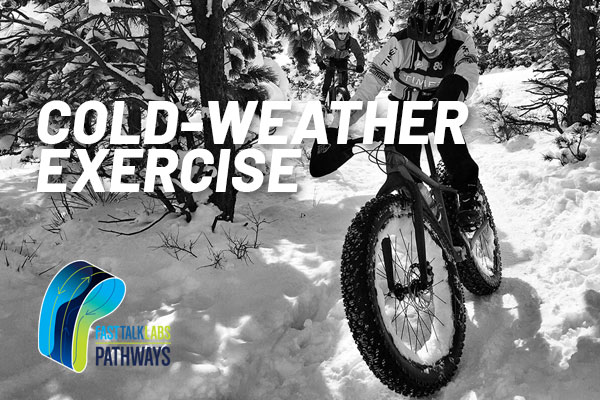Fast Talk Labs members,
We are pleased to release our new Pathway focused on exercising in cold weather!
Winter is coming. Just in time for the chill of winter workouts, Library Members can explore age-old myths about exercising in the cold, the physiology of cold-temp exercise, your best strategy for training in the cold, and our practical, expert, gear tips.
From the science of breathing cold air to the art of layering, our Exercise in the Cold Pathway will help you beat the freeze.
This Pathway features Dr. Stephen Cheung, a Canadian and one of the world’s leading environmental physiologists, as well as Dr. Iñigo San Millán, our Canadian CEO and Coach Trevor Connor, and Dr. Andy Pruitt.
The Exercise in Cold Weather Pathway explores:
- How your body lies to you about the temp outside
- Why it’s important to stay warm during exercise
- Why you should overdress for cold weather
- How cold temps affect your performance
- How cold air affects your lungs and breathing
- How to optimize nutrition for differences in metabolism in cold weather
- Our Canadian-approved list of cold-weather clothing and gear
- Why skipping leg warmers makes you dumb
- How to train in cold weather
- Myths about training in hot and cold temps
One-third of this Pathway is available free to Listener Members. To access the full Pathway and all Fast Talk Labs content, upgrade to Library Membership.
What Is a Pathway?
Fast Talk Labs Pathways™ offer new ways to explore concepts, master skills, and solve training challenges. Pathways are collections of expert sport science articles and videos dive deep into specific endurance topics. We link each story together so members always understand the why and the how.
Think of a Fast Talk Labs Pathway as a MasterClass for endurance sports. Pathways offer a comprehensive understanding of a topic from a variety of expert perspectives. Follow a Pathway and you will know the next path forward in your own training.
Each month, we release new Pathways that address key concepts, training techniques, performance analysis methods, and much more.
What topics would you like us to explore in an upcoming Pathway? Let us know how Fast Talk Labs can help you! Email us at info@fasttalklabs.com or simply reply to this Forum topic.
